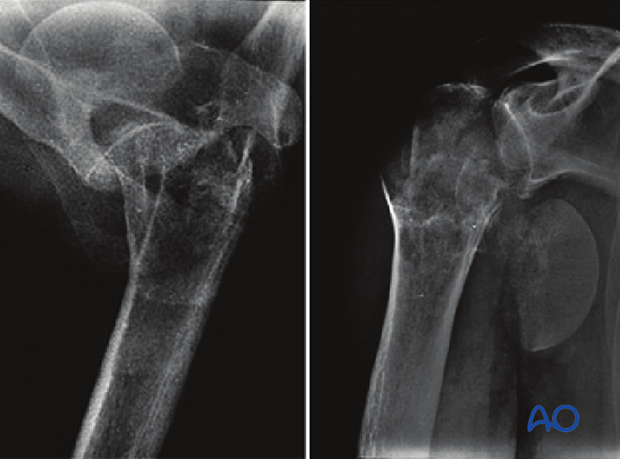4-Part, dislocation, simple metaphyseal, intact articular
These are unusual injuries.
In these fractures the anatomical neck and the tuberosities are fractured, the articular surface remains intact. This “4-part fracture dislocation” requires a reduction as soon as possible. Open reduction is often necessary. In elderly osteoporotic patients arthroplasty needs to be considered.
These fractures involve a glenohumeral dislocation (head fragment displaced from glenoid fossa). An anterior dislocation is much more common than posterior. The risk of avascular necrosis is significantly increased by the combination of a dislocation with a fracture that devascularizes a small humeral head fragment or is comminuted. Although these fractures do not necessarily pass through the articular surface, they are termed “articular fractures”; the articular surface is detached from both tuberosities and/or fractured itself. 4-part fractures according to Codman and Neer separate the proximal humeral epiphysis from both tuberosities and the metaphysis.

X-rays taken from Orozco R et al, (1998) Atlas of Internal Fixation. Used with kind permission.

Humeral head impaction
Impaction of the humeral head is a feature of some of these fractures. Impaction injuries should be identified and respected. Treatment protocols for these rare injuries remain to be developed.














